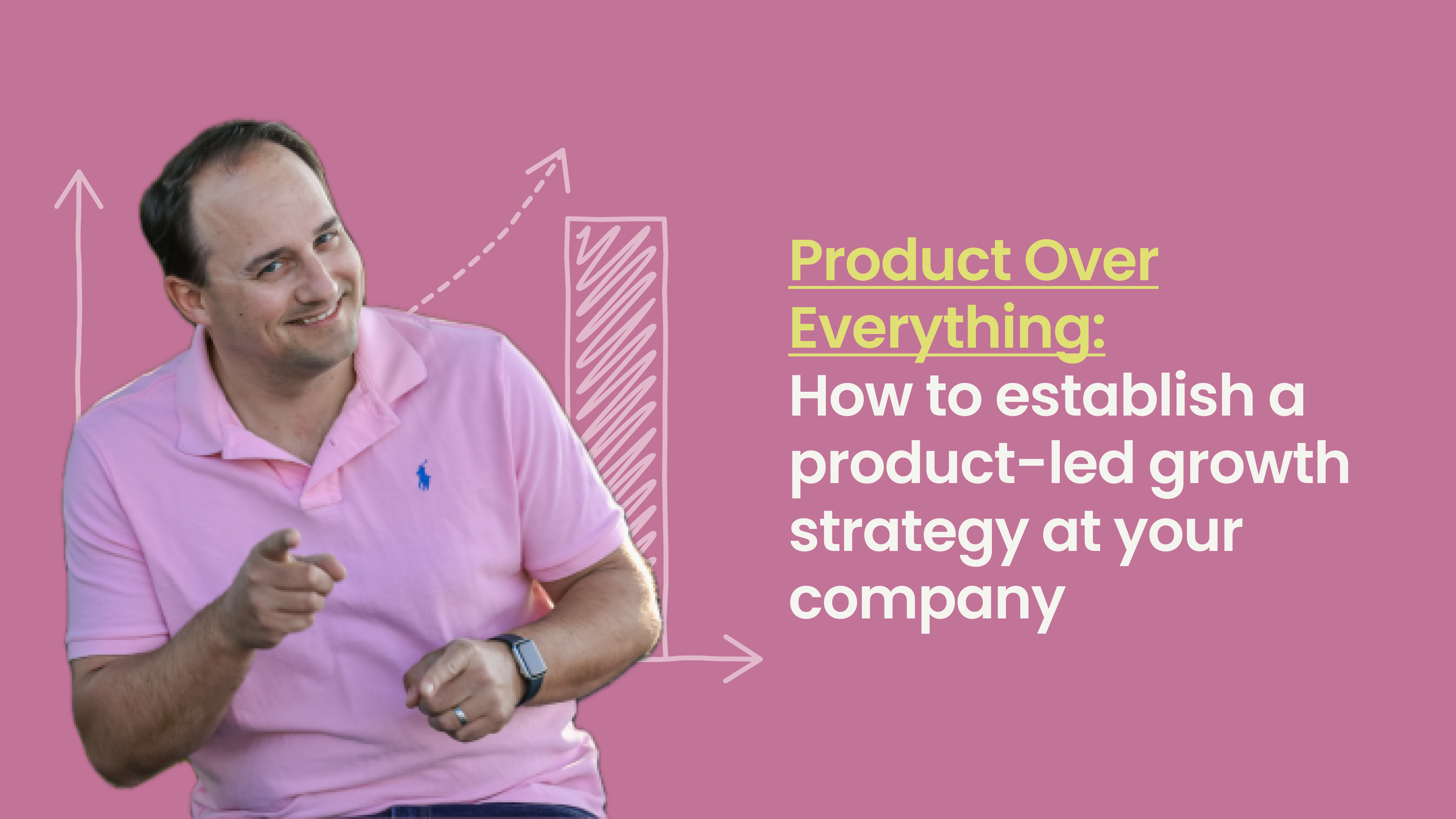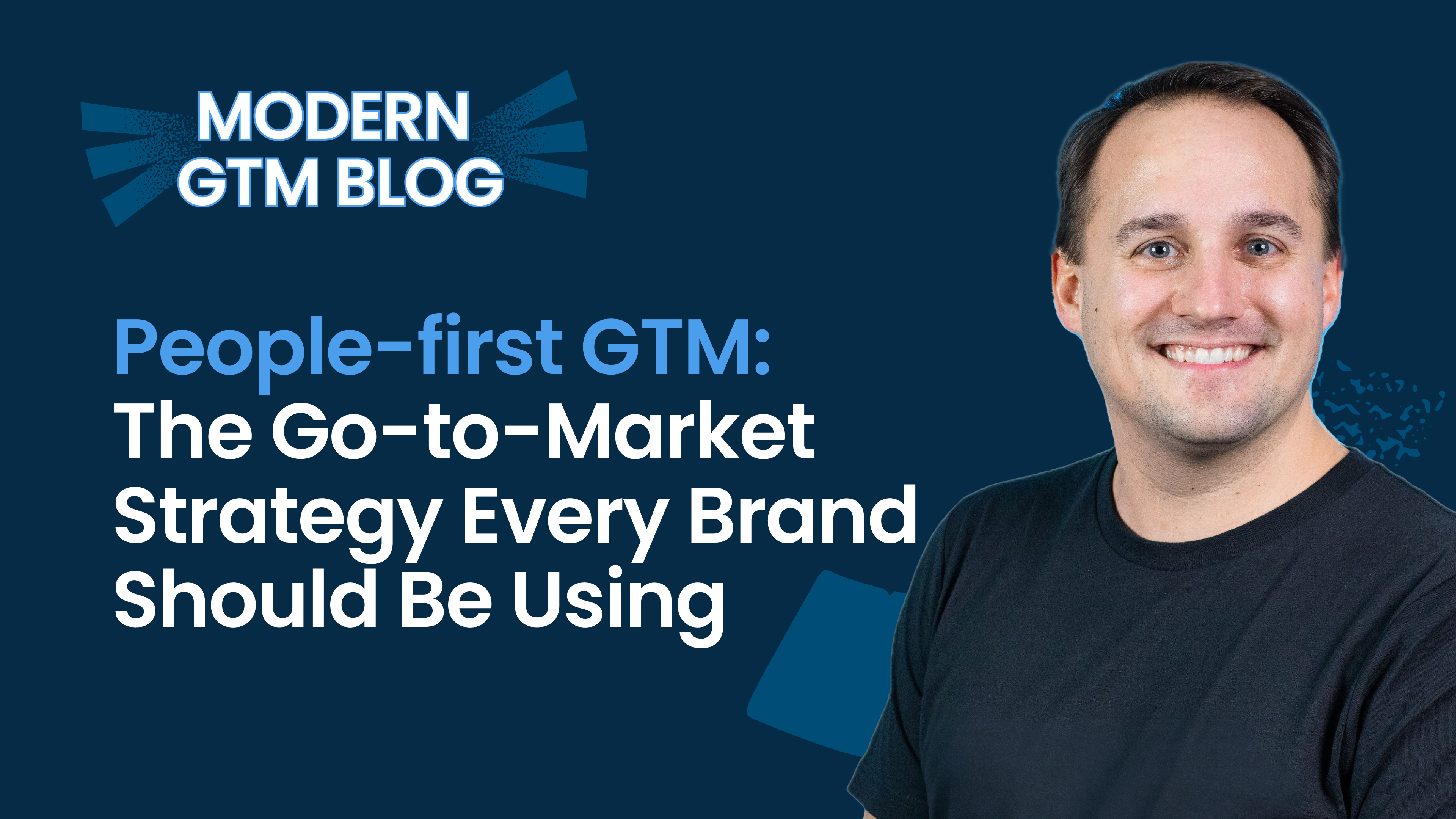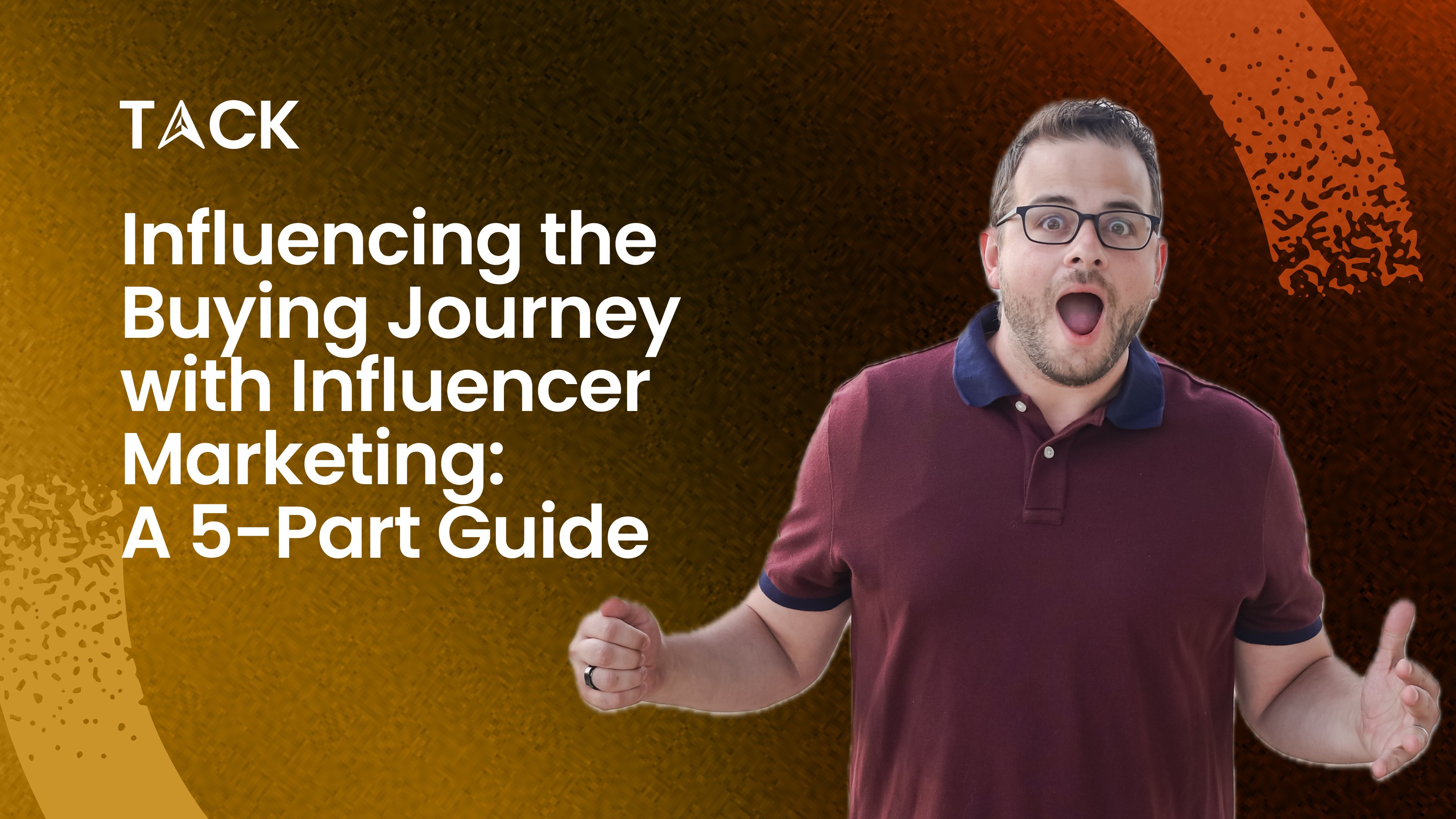What’s up!
Welcome back to another edition of The People-First GTM Newsletter.
Weekly insights to match your go-to-market to how people buy today.
This newsletter has grown pretty fast, and I love to see it. Seriously, hypes me up. Big props to the 200+ people who joined since last week.
Today, let's talk about why content is the engine that drives your GTM Success.
Think of content not just as mere words on a page or pixels on a screen but as the pulsating core of your brand's journey. The propellant drives your message forward, the magnetic force that draws in your audience, and the vital link that binds you to your customers.
💡 Why is this crucial? In today's fiercely competitive marketplace, exceptional content is your golden ticket to rising above the cacophony and seizing attention. It's the secret ingredient that converts casual browsers into devoted patrons.
-
According to Gartner, 83% of B2B buyers expect personalized experiences from vendors.
-
Research by Forrester indicates that 60% of B2B buyers prefer to do research online rather than interact with a sales rep, highlighting the importance of impactful content.
-
According to Harvard Business Review, increasing customer retention rates by just 5% can boost profits by 25% to 95%.
Brands risk blending into the background rather than standing out due to monotony. Consumers bombarded by constant information are quick to tune out anything that fails to captivate their interest or offer genuine value.
Generic content often lacks the personalization and relevance that modern consumers crave. Customization is the norm today, and delivering cookie-cutter content fails to resonate with audiences meaningfully. As a result, brands miss out on opportunities to forge deeper connections and foster brand loyalty.
Moreover, generic content fails to address the diverse needs and pain points of different segments within the target audience. Each buyer persona has unique challenges, preferences, and priorities, and a one-size-fits-all approach simply won't suffice to meet their expectations.
Brands that fail to differentiate themselves through compelling content risk losing market share to more innovative and customer-centric competitors. Content is a powerful tool for showcasing a brand's unique value proposition and thought leadership; neglecting this aspect can hinder growth and long-term success.
Relying on generic content in today's fast-paced digital ecosystem is akin to shooting oneself in the foot—a self-inflicted obstacle hampers visibility, engagement, and bottom-line results. Before we get to the tactical side of content creation, let’s take a look at why traditional content creation won’t cut the deal anymore:
Common Pitfalls of Traditional Content Creation:
-
One-Size-Fits-All Approach Doesn’t Cut Anymore:
Believing that a single, standardized approach can effectively target diverse customer segments and meet varying needs. This approach fails to recognize the unique preferences, behaviors, and pain points of individual customers or market segments, leading to missed opportunities for engagement and conversion.
According to a Salesforce study, 84% of customers say being treated like a person, not a number, is very important to winning their business.
-
Product-Centric Focus Won’t Take Your Far:
Traditional content creation assumes that promoting product features and functionalities alone will drive sales and customer loyalty. Neglecting to prioritize the customer experience and failing to address the underlying needs and desires driving purchasing decisions.
Research from Accenture reveals that 91% of consumers are more likely to shop with brands that recognize, remember, and provide relevant offers and recommendations.
-
Limited Customer Engagement Will Drain Your Profits:
Another mistake is viewing customer interactions as transactional exchanges rather than ongoing relationships. Failing to foster meaningful connections with customers beyond the point of sale, resulting in reduced brand loyalty and missed opportunities for upselling and cross-selling.
Harvard Business Review found that increasing customer retention rates by just 5% can boost profits by 25% to 95%.
How People-First GTM Addresses These Challenges:
-
It Offers a More Personalized Content Approach:
People-First GTM emphasizes the importance of tailoring strategies and messaging to resonate with individual customers or target segments. Utilize data-driven insights and customer personas to craft personalized marketing campaigns and communications that address specific pain points and preferences.
A study by Epsilon found that 80% of consumers are more likely to do business with a company if it offers personalized experiences.
-
It Puts You in a Customer-Centric Mindset:
Prioritize the customer journey and experience, from initial awareness to post-purchase support. Implement customer feedback loops, conduct surveys, and actively listen to customer needs to continually refine products and services and enhance the overall customer experience.
B2B buyers consume three to seven pieces of content before engaging with a sales representative.
-
It Focuses on Building Lasting Relationships:
Shift focus from transactional interactions to building long-term, mutually beneficial customer relationships. Invest in community building, loyalty programs, and ongoing engagement initiatives to foster a sense of belonging and advocacy among customers.
Salesforce reports that 72% of B2B buyers expect vendors to personalize engagement to their needs.
How to Create Captivating Content
Generic GTM strategies tend to focus on product-centric messaging, overlooking the importance of building genuine connections with your audience. Instead of bombarding prospects with promotional content, consider shifting towards a more People-First GTM approach.
Here's how to craft compelling content tailored to the unique needs of B2B audiences:
-
Structured and Outcome-Based Content:
Define clear objectives for your content, such as educating prospects, generating leads, or nurturing existing customers towards upsells or renewals.
Structure your content with a problem-solution framework, addressing common pain points faced by B2B buyers and offering actionable solutions.
Leverage formats like whitepapers, case studies, or how-to guides to provide in-depth insights and practical guidance that resonates with B2B decision-makers.
For Example, IBM's "State of Marketing" whitepaper series provides comprehensive insights into emerging trends and best practices, helping B2B marketers navigate the evolving digital marketing landscape.

-
Unique Thought Leadership Content:
Cultivate thought leadership by showcasing your organization's expertise and unique perspectives on industry trends, challenges, and innovations.
Encourage internal subject matter experts to contribute to content creation, sharing insights derived from their firsthand experience and industry knowledge.
Incorporate data-driven research, industry benchmarks, and proprietary insights to enhance the credibility and authority of your thought leadership content.
For example, McKinsey & Company's "McKinsey Quarterly" publication features thought-provoking articles authored by industry experts that offer strategic insights and analyses on various business topics.

-
Tailored Content Experiences:
Segment your B2B audience based on firmographics, such as company size, industry vertical, or job function, to deliver personalized content experiences.
Develop targeted content assets that address specific pain points and priorities of different buyer personas within the B2B buying committee.
Experiment with interactive content formats like ROI calculators, product demos, or interactive webinars to engage B2B audiences and facilitate informed decision-making.
For Example, HubSpot's "Marketing Hub" offers a variety of interactive tools and resources, including website grader, email marketing software, and CRM platform, tailored to the needs of B2B marketers seeking to streamline their marketing efforts.
How Does the Content Feedback Loop in People-First GTM Look Like?
Once you've developed engaging content that resonates with your audience, the next step is to ensure that you're not just broadcasting your message but also actively listening to and engaging with your audience's responses. This feedback loop is what transforms one-way communication into a dynamic exchange, allowing you to refine your content strategy based on real-time insights and continuously improve the value you deliver to your audience. Let's take a look at how this feedback loop operates within a People-First GTM framework.

Platforms:
-
Social Media Platforms (LinkedIn, Twitter, Facebook Groups)
-
Industry-Specific Forums and Communities (Shouout to
ClubPF
here 😉) -
Webinar and Workshop Hosting Platforms (Zoom, Webex, GoToWebinar)
-
Email Marketing Platforms (Mailchimp, Constant Contact, HubSpot)
-
Feedback Collection Tools (SurveyMonkey, Google Forms, Typeform)
Questions to Ask:
-
What topics or themes are most relevant and valuable to our audience?
-
How can we encourage more active participation and engagement from our audience?
-
What feedback mechanisms are most effective in capturing audience insights?
-
Are there any emerging trends or discussions within our audience that we should address in our content?
Things to Do:
-
Content Creation:
-
Develop educational content focused on industry challenges, thought leadership, and actionable insights.
-
-
Audience Engagement:
-
Promote content through B2B channels like LinkedIn, industry forums, and email newsletters.
-
Encourage interaction through questions, feedback requests, and participation in discussions.
-
-
Feedback Collection:
-
Gather feedback from stakeholders via surveys, comments, and direct messages.
-
Focus on understanding pain points, interests, and preferences related to content topics.
-
-
Analysis and Insights:
-
Analyze feedback to identify themes, trends, and areas for improvement.
-
Consider qualitative feedback on relevance, clarity, depth, and quantitative metrics like engagement rates.
-
-
Iterative Improvement:
-
Refine content strategy based on insights, adjusting formats, topics, and distribution channels.
-
Address gaps in coverage and provide solutions to industry challenges.
-
-
Continued Engagement:
-
Maintain dialogue through social media, webinar Q&A sessions, and email follow-ups.
-
Foster community by promptly responding to inquiries and addressing concerns.
-
-
Measurement and Evaluation:
-
Monitor KPIs such as website traffic, lead generation, and customer acquisition.
-
Evaluate the impact of content on sales pipeline progression, customer retention, and brand reputation.
-
Real-World Case Study: Moz's Content-Driven People-First GTM
Educational Content Hub:
Moz is renowned for its comprehensive educational content hub, featuring blogs, guides, and webinars, all aimed at empowering marketers with the latest SEO and digital marketing insights.
Community Engagement:
They actively nurture a vibrant community through their forums, Q&A sessions, and social media engagement. This two-way interaction fosters trust and loyalty among their audience.
Iterative Approach:
Moz continuously iterates on its content strategy based on audience feedback and industry trends. This ensures it stays relevant and provides timely solutions to its audience's evolving needs.
Result:
By prioritizing education, community, and adaptability, Moz has solidified its position as a go-to resource for marketers worldwide, driving both brand awareness and customer loyalty.
Takeaway:
Following Moz's lead, B2B brands can leverage content to educate their audience and foster a sense of community and adaptability in their GTM approach.
At the end of the day…
Content-led growth goes beyond the generic GTM approach by focusing on building genuine relationships with your audience, positioning your brand as a go-to resource, and delivering measurable impact. Rather than simply pushing out generic marketing messages, content-led growth involves crafting content that resonates deeply with your audience's needs and interests, driving meaningful engagement and ultimately driving business growth.
By prioritizing authenticity, collaboration, and value creation, you can differentiate your brand and forge lasting connections with your audience that translate into real business results.
That’s it, folks! I know this was long, but hopefully, it impacted you. Let me know what you think of it, either through the poll or by replying to this email.
Coming next week:
ELG For GTM Success - What is it?
Until next week!
Nick
PS: If you found value in this, please share it with someone else. Sharing is caring and will help me spread the good word about getting rid of generic GTM and focusing on a people-first one.






